Gentrification And Its Discontents: The Conversation Around Putnam Triangle Plaza

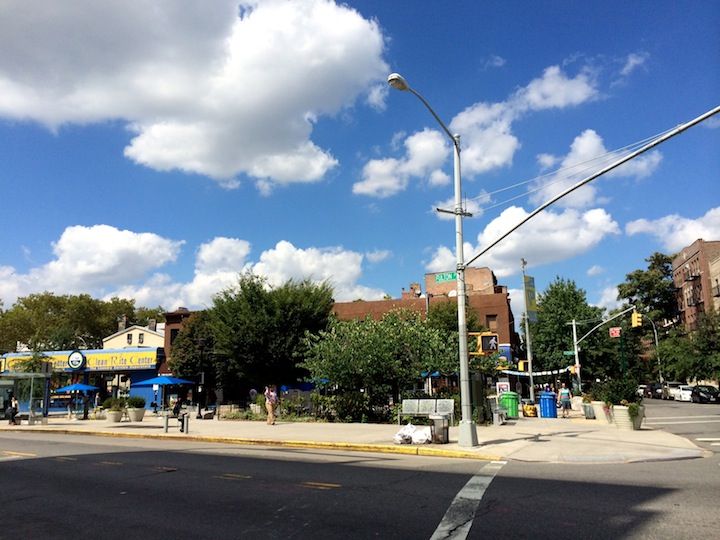
A stark tale of Brooklyn gentrification is playing out in Clinton Hill, as it has over the past four years. Despite opposition from some of the merchants and residents it is intended to serve, Putnam Triangle Plaza, a creation of the Fulton Area Business Improvement District (FAB Alliance), has progressed steadily from temporary amenity towards anticipated reality — all at an estimated cost to taxpayers of $3.1 million dollars.
Created in 2011 by blocking off Putnam Avenue between Fulton Street and Grand Avenue, the plaza is either a much-needed urban oasis in the midst of a busy traffic intersection — according to FAB Alliance research and new residents who over the past few years have flocked to a busy program of public events — or a public nuisance that attracts drunks, junkies and prostitutes, as select business owners and longtime locals such as Schellie Hagan contend.
A Clinton Hill resident since 1983, Hagan created Fulton Area Coming Together to unite opposition to unwanted changes to her neighborhood. She describes a squat, Italianate building once located on Fulton and Putnam’s triangular intersection — a long-ago victim of a previous beautification campaign — as part of a lost era for Fulton Street. She considers that loss to be the result of gentrification — embodied by the FAB Alliance — up Fulton Avenue.
“I’ve lived here a long time, and since the BID came in the neighborhood has had no voice,” Hagan said. “The BID keeps saying it speaks for the neighborhood but it doesn’t even speak for the stores, and it certainly doesn’t speak for the residents.”
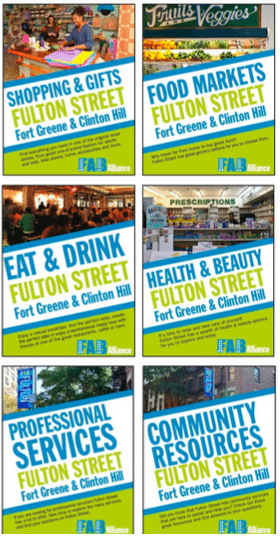
FAB Alliance is one of 72 Business Improvement Districts in New York City, first introduced in 1984 in Manhattan’s Union Square district as private, non-profit entities empowered to represent local member businesses in city affairs while also working to boost commerce by improving quality of life on commercial strips — usually via levying fees to pay for services such as street cleaning, garbage disposal, and security.
Since it’s inception in 2009, FAB Alliance has been a lightning rod, as select Fulton shop owners — including the Widdi family, who for 50 years have operated a supermarket at 991 Fulton Street — have questioned the effectiveness of the BID’s efforts to generate sustainable foot traffic along Fulton through events and street plazas.
Critics contend that public events — with partners such as BAM, which this month began a second year of FAB FLICKS — bring out families with young children, but these crowds don’t automatically translate into increased revenue for shops.
FAB Alliance Executive Director Phillip Kellogg is adamant that the amenities provided by Putnam are necessary and supported by a majority of locals.
“Since the Putnam Triangle Plaza was created, foot traffic is up in the area, vacant lots and buildings are being developed, and existing businesses are investing in improving their store fronts and expanding their offerings,” Kellogg said. “Community input resulted in a design for the reconstructed plaza that includes public safety improvements, additional shade and plantings, seating for senior citizens — and will build on the tremendous momentum this corner of Clinton Hill has been experiencing over the past three years.”
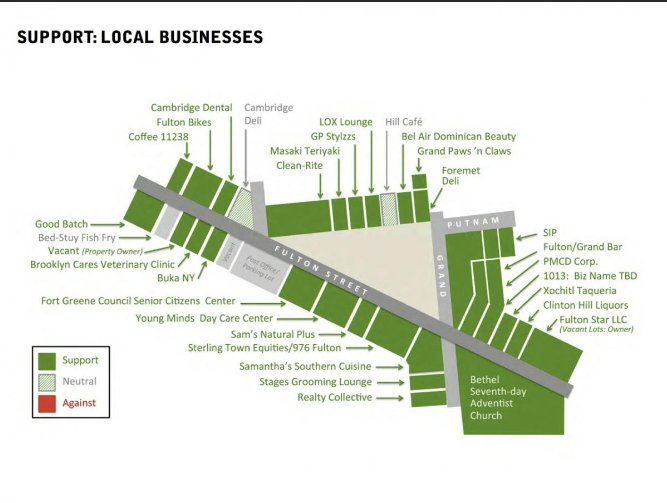
Long-time business owners are caught between new residents with different (and perhaps higher) expectations, and a changing physical landscape that presents unexpected challenges.
Hill Café co-owner S.J. Becket, whose business was the only one listed as “neutral” on a FAB street plan claiming “overwhelming support” for the Triangle Project, told us that the Plaza currently brings some issues with drug use, alcohol consumption, and public urination.
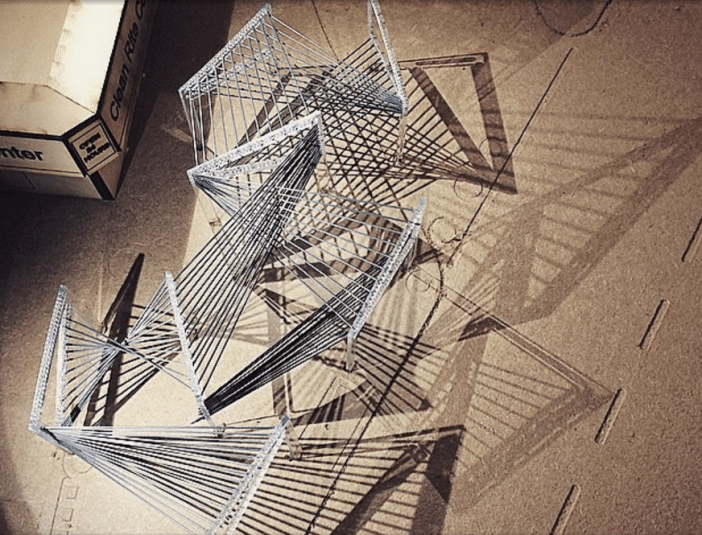
Then there is a group of idealistic Pratt students, who have proposed a temporary public sculpture that would provide shade as well as lighting, which many residents agree will help with security for a site that they say has become a lure for undesirable activities. PrattSIDE, a student-run organization whose mission is the betterment of underprivileged communities, has raised approximately $10,000 dollars for the sculpture, which will be installed for 11 months.
Mark Parsons, an architect advising PrattSIDE who also is dean of serves as director of technologies in Pratt’s undergraduate architecture program, said his students polled the community, presented their ideas at Community Board 2 meetings, and engaged people who walk through the Putnam Triangle area.
Looking to finalize their proposal, in March Pratt students presented preliminary images and a model to the community, including members of the Grace Agard Harewood Senior Citizen’s Center, located directly across the street from the plaza at 966 Fulton Street.
“Students set up presentation in the public area at the Triangle,” Parsons said via email, “on a Sunday so that community members would have time to ask questions, look at the model and the drawings and make suggestions. That’s how the students ended up incorporating additional planters into their design — popular feedback!”
In a different time or place perhaps the PrattSIDE proposal might be lauded as a local institution making a positive contribution to its community. But in an email to Pratt President Thomas Schutte, Hagan called the PrattSIDE proposal an “experiment,” specifying that what locals really want are “free and clear” sidewalks.
“We wish PrattSIDE well,” Hagan concluded, “and hope their work can be situated in a place where it will be appreciated and safe. Putnam Plaza is not that place.”
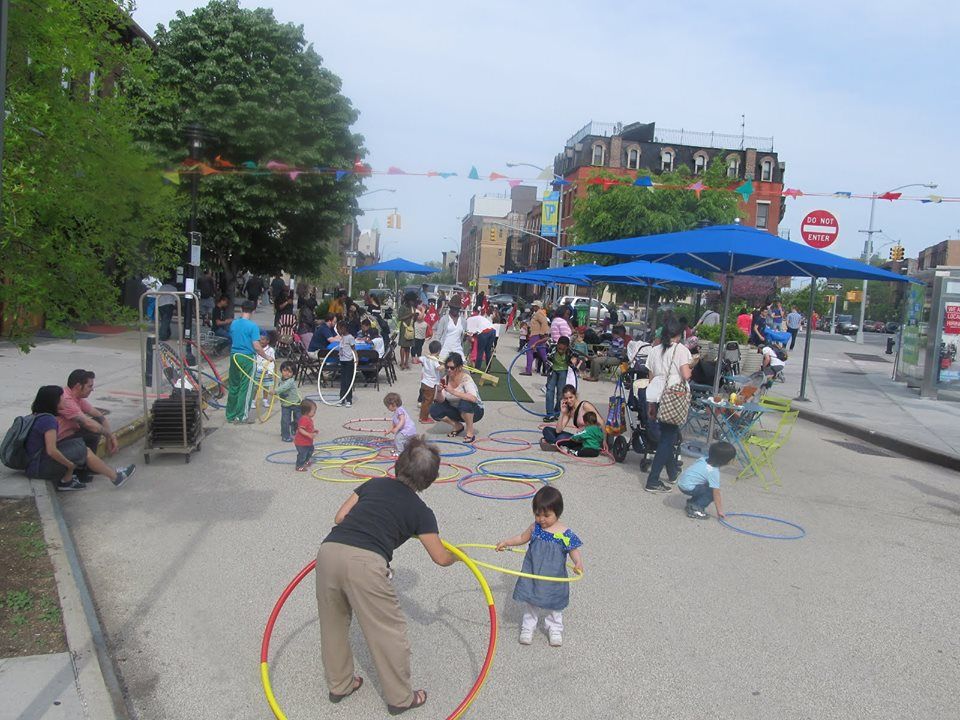
Local politicians are split on the issue.
In October 2014 State Senator Velmanette Montgomery asked the Department of Transportation (DOT) to abandon plans to create a permanent plaza, citing “negative impacts,” including loitering, menacing, traffic jams, and various forms of threats, but since the project is city-funded, there’s nothing more she can do, according to a spokesperson.
Councilmember Laurie Cumbo, whose district inherited both the project and its funding from her predecessor, Letitia James, on the other hand, emphasized the community benefits of a reconstructed plaza.
“In a district as diverse as ours, community engagement is essential before any major projects that have the potential to impact our quality of life are undertaken,” Cumbo said by email. “The reconstruction of the Putnam Triangle is an opportunity for local residents, the DOT, FAB Alliance, and CB 2 to work cohesively towards a design that would enhance public safety, foster a stronger sense of community, strengthen relationships, while increasing patronage for area businesses.”
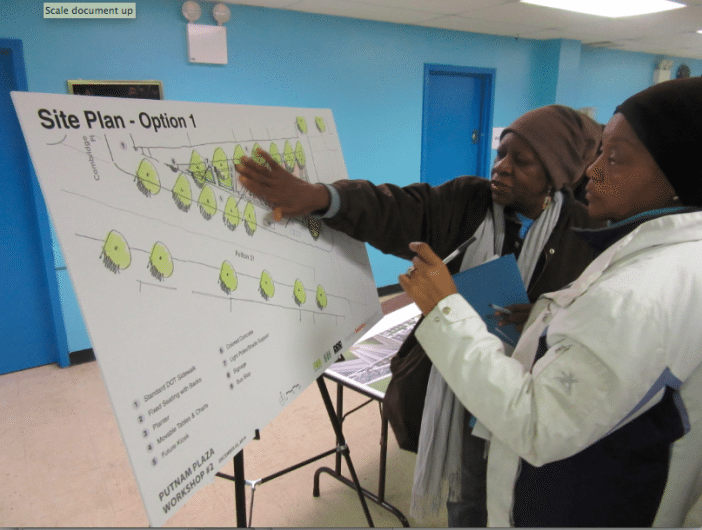
This past April, CB 2 approved the FAB/DOT plan to permanently expand the plaza to 15,000 square feet. Construction is slated to begin in June 2016 and will take approximately 12 months: a year of activity that will disrupt commercial activity for the six small businesses whose storefronts face the plaza.
According to Kellogg, there will be an ongoing effort to mitigate the impact of construction.
“FAB has already started conversations with businesses and the DOT,” Kellogg said. “FAB will also increase its promotion of affected businesses, and develop ideas to increase visibility and presence of those businesses around the construction area.”
For Hagan, the lesson here is simple: leave well enough alone. “Fancy plazas are for fancy people,” she wrote in an email. “All we want is what was taken. All we want is what we had. We want our street back.”
Becket of Hill Café, whose public neutrality might be interpreted as an acceptance of the inevitable, views the situation differently. “I’m not saying the plaza is a bad idea; this is a good idea. The construction will block everything, but in the end we’ll have a beautiful plaza.”




